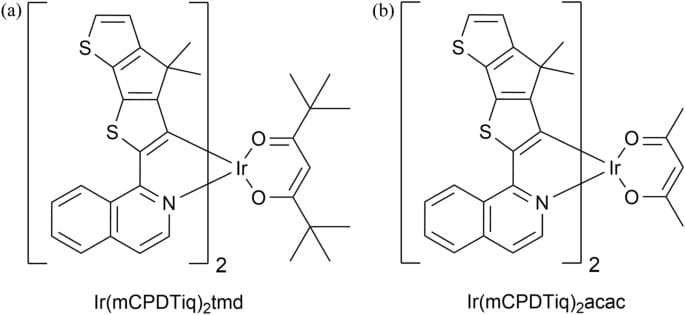Yongjin Park, Gyeong Seok Lee, Woochan Lee, Seunghyup Yoo, Yun-Hi Kim & Kyung-Cheol Choi
Published: 25 January 2023

Abstract
Near-infrared organic light-emitting diodes (NIR OLEDs) with heavy metals are regularly reported due to the advantages of their various applications in healthcare services, veil authentication, and night vision displays. For commercial applications, it is necessary to look at radiance capacity (RC) instead of radiance because of power consumption. However, recent papers still reported only simple high radiance performance and do not look at device from the point of view of RC. To overcome this hurdle, we designed Ir(III)-based heteroleptic NIR materials with two types of auxiliary ligand. The proposed emitters achieve a highly oriented horizontal dipole ratio (Ir(mCPDTiq)2tmd, complex 1: 80%, Ir(mCPDTiq)2acac, complex 2: 81%) with a short radiative lifetime (1: 386 ns, 2: 323 ns). The device also shows an extremely low turn-on voltage (Von) of 2.2 V and a high RC of 720 mW/sr/m2/V. The results on the Von and RC of the device is demonstrated an outstanding performance among the Ir(III)-based NIR OLEDs with a similar emission peak.






